Ao Yin
Anomaly Subsequence Detection with Dynamic Local Density for Time Series
Jun 28, 2019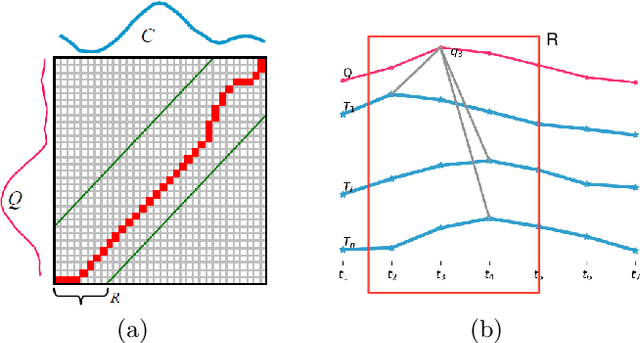
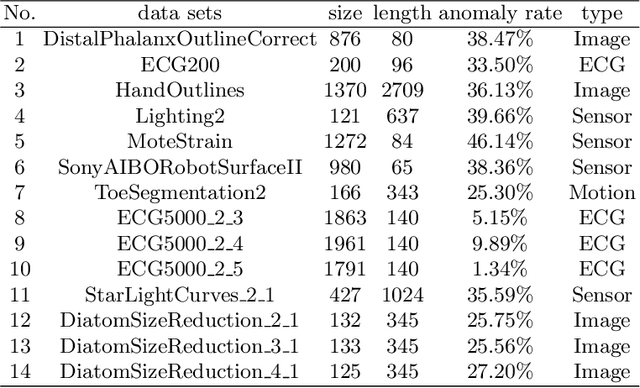
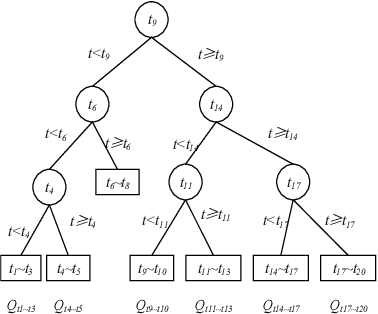
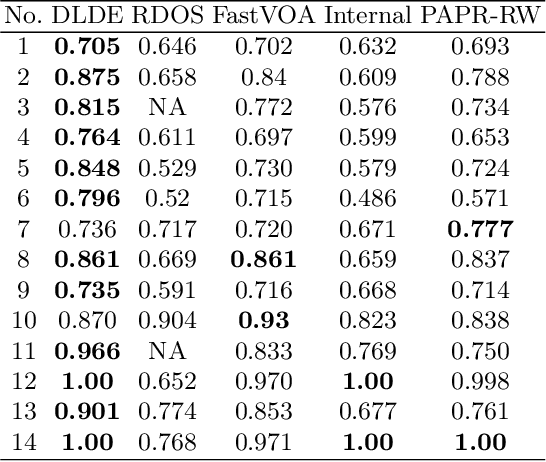
Abstract:Anomaly subsequence detection is to detect inconsistent data, which always contains important information, among time series. Due to the high dimensionality of the time series, traditional anomaly detection often requires a large time overhead; furthermore, even if the dimensionality reduction techniques can improve the efficiency, they will lose some information and suffer from time drift and parameter tuning. In this paper, we propose a new anomaly subsequence detection with Dynamic Local Density Estimation (DLDE) to improve the detection effect without losing the trend information by dynamically dividing the time series using Time Split Tree. In order to avoid the impact of the hash function and the randomness of dynamic time segments, ensemble learning is used. Experimental results on different types of data sets verify that the proposed model outperforms the state-of-art methods, and the accuracy has big improvement.
An Improvement of PAA on Trend-Based Approximation for Time Series
Jun 28, 2019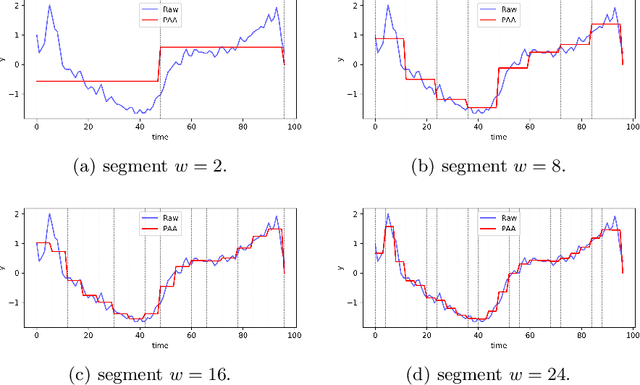
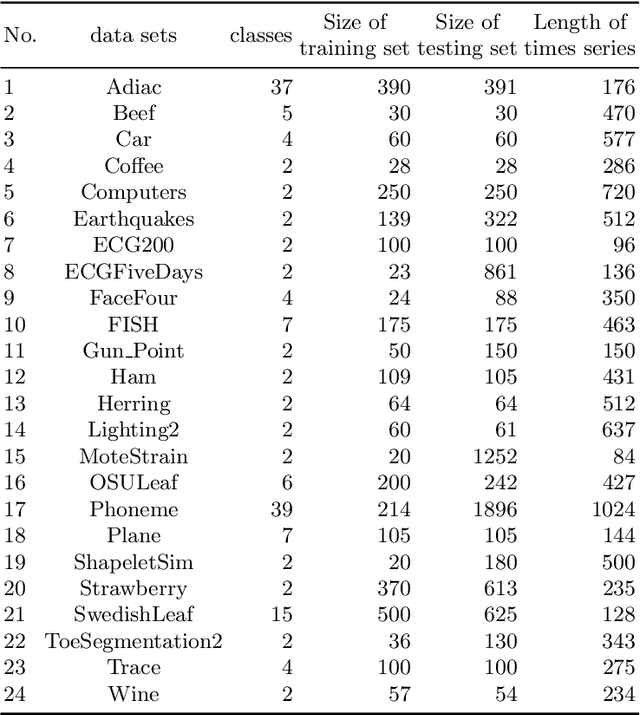
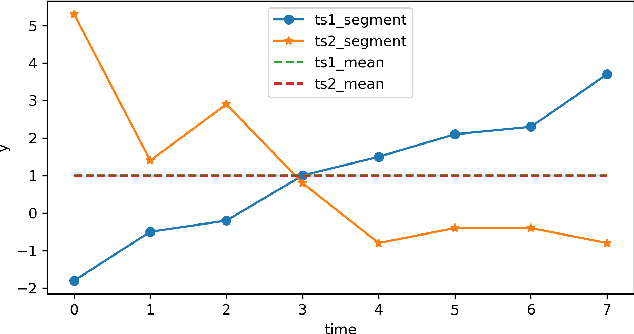
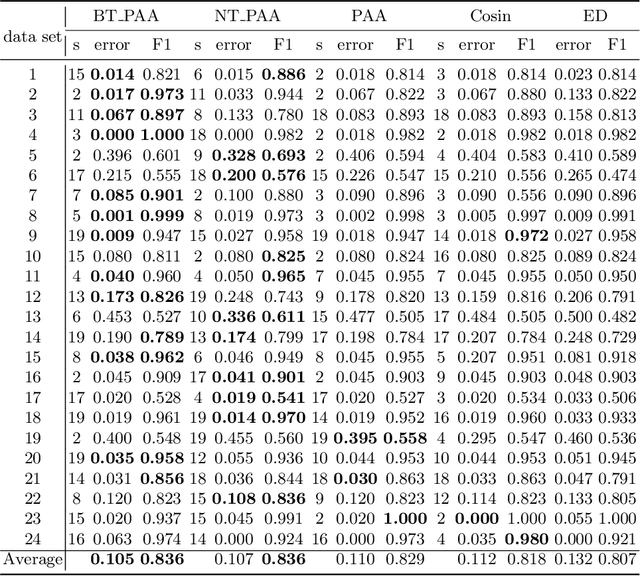
Abstract:Piecewise Aggregate Approximation (PAA) is a competitive basic dimension reduction method for high-dimensional time series mining. When deployed, however, the limitations are obvious that some important information will be missed, especially the trend. In this paper, we propose two new approaches for time series that utilize approximate trend feature information. Our first method is based on relative mean value of each segment to record the trend, which divide each segment into two parts and use the numerical average respectively to represent the trend. We proved that this method satisfies lower bound which guarantee no false dismissals. Our second method uses a binary string to record the trend which is also relative to mean in each segment. Our methods are applied on similarity measurement in classification and anomaly detection, the experimental results show the improvement of accuracy and effectiveness by extracting the trend feature suitably.
 Add to Chrome
Add to Chrome Add to Firefox
Add to Firefox Add to Edge
Add to Edge